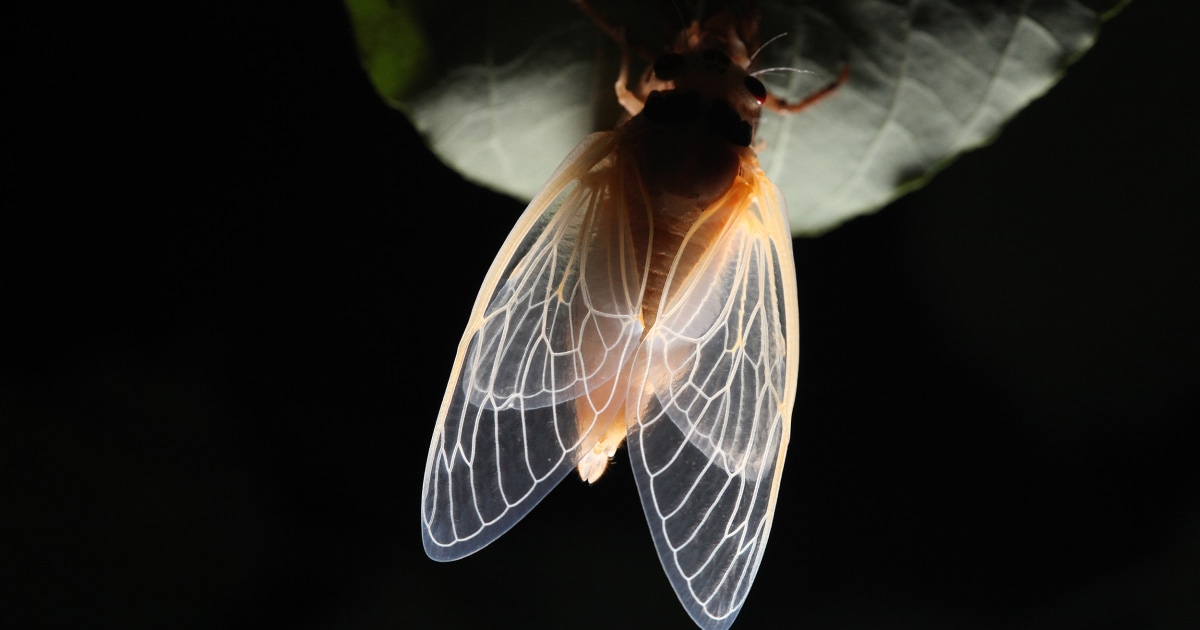แนวคิดหลัก
The author highlights the unique phenomenon of Brood X, a group of cicadas emerging every 17 years, and emphasizes their importance in the ecosystem through predator satiation and ecological contributions.
บทคัดย่อ
In a rare natural spectacle, billions of cicadas known as Brood X will emerge after 17 years underground. These periodical insects synchronize their emergence across multiple states to mate and complete their life cycle. The cicadas' extended life cycle is believed to have evolved during glacial periods for survival and predator satiation purposes. Despite facing threats like deforestation and climate change, these insects play a crucial role in the ecosystem by serving as food sources and contributing to soil fertility.
ปรับแต่งบทสรุป
เขียนใหม่ด้วย AI
สร้างการอ้างอิง
แปลแหล่งที่มา
เป็นภาษาอื่น
สร้าง MindMap
จากเนื้อหาต้นฉบับ
ไปยังแหล่งที่มา
www.nbcnews.com
Get ready for Brood X: The once-every-17-years cicada swarm is coming
สถิติ
Billions of Brood X cicadas will be seen across a dozen states.
There are seven species of North American periodical cicadas.
Two broods, XI and XXI, have gone extinct.
A warming climate might favor a shorter lifespan for cicadas.
คำพูด
"Cicadas are very gentle; they don't bite or sting." - Chris Simon
ข้อมูลเชิงลึกที่สำคัญจาก
by Sebastian Al... ที่ www.nbcnews.com 03-04-2024
https://www.nbcnews.com/science/science-news/get-ready-brood-x-every-17-years-cicada-swarm-coming-rcna429
สอบถามเพิ่มเติม
What impact does the extinction of certain broods have on the ecosystem?
The extinction of certain broods, such as Brood XI and Brood XXI, can have significant impacts on the ecosystem. Periodical cicadas play a crucial role in their environment by serving as a food source for various animals both above and below ground. The nymphs are consumed by predators living underground, while the adults provide sustenance for carnivores in the area. Additionally, when cicadas die and decay, they contribute essential nutrients back to the soil, acting as natural fertilizers for trees and plants. Therefore, the loss of these cicada populations can disrupt food chains and nutrient cycles within ecosystems.
How can conservation efforts help protect periodical cicada populations?
Conservation efforts play a vital role in protecting periodical cicada populations from further decline or extinction. One key aspect of conservation is preserving their habitat by ensuring that there are sufficient trees for them to lay eggs in and feed upon. Protecting forested areas from deforestation is crucial for maintaining healthy cicada populations. Additionally, raising awareness about the importance of these insects in ecosystems can lead to increased public support for conservation initiatives focused on preserving their habitats.
What other insect behaviors could be influenced by past environmental changes?
Past environmental changes have not only impacted periodical cicadas but also influenced various other insect behaviors. For example, some insects may have altered their life cycles or behaviors in response to changing climate conditions over time. Insects that rely on specific plant species for food or reproduction may have had to adapt to shifts in plant distributions due to historical climate fluctuations. Changes in temperature patterns could also affect insect development rates or alter breeding seasons. Understanding how past environmental changes have shaped insect behavior can provide valuable insights into how current global warming trends might impact insect populations worldwide.
0
